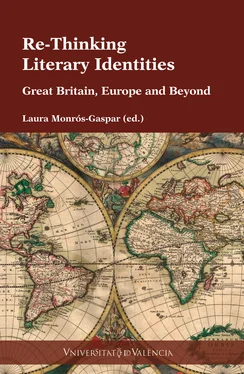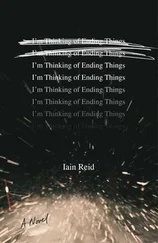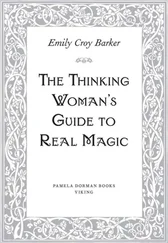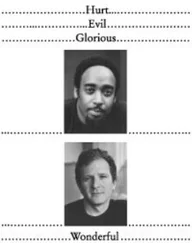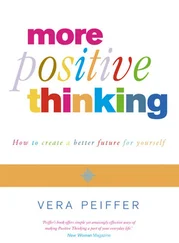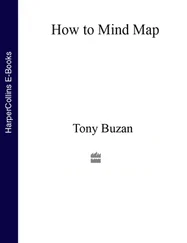AAVV - Re-Thinking Literary Identities
Здесь есть возможность читать онлайн «AAVV - Re-Thinking Literary Identities» — ознакомительный отрывок электронной книги совершенно бесплатно, а после прочтения отрывка купить полную версию. В некоторых случаях можно слушать аудио, скачать через торрент в формате fb2 и присутствует краткое содержание. Жанр: unrecognised, на английском языке. Описание произведения, (предисловие) а так же отзывы посетителей доступны на портале библиотеки ЛибКат.
- Название:Re-Thinking Literary Identities
- Автор:
- Жанр:
- Год:неизвестен
- ISBN:нет данных
- Рейтинг книги:3 / 5. Голосов: 1
-
Избранное:Добавить в избранное
- Отзывы:
-
Ваша оценка:
- 60
- 1
- 2
- 3
- 4
- 5
Re-Thinking Literary Identities: краткое содержание, описание и аннотация
Предлагаем к чтению аннотацию, описание, краткое содержание или предисловие (зависит от того, что написал сам автор книги «Re-Thinking Literary Identities»). Если вы не нашли необходимую информацию о книге — напишите в комментариях, мы постараемся отыскать её.
Re-Thinking Literary Identities — читать онлайн ознакомительный отрывок
Ниже представлен текст книги, разбитый по страницам. Система сохранения места последней прочитанной страницы, позволяет с удобством читать онлайн бесплатно книгу «Re-Thinking Literary Identities», без необходимости каждый раз заново искать на чём Вы остановились. Поставьте закладку, и сможете в любой момент перейти на страницу, на которой закончили чтение.
Интервал:
Закладка:
Rantin begins with the band setting up the space, chatting with their gathering audience, encouraging drinks-buying, and introducing themselves. They explain that the show consists of a ‘collection of fragments’, with each song or story being ‘like a turn, or a track in a set list at a gig’ (Hurley 2014: 312), a preamble which helpfully translates the traditional ceilidh ‘turn’ in terms accessible to a contemporary theatre/gig audience. They play a version of ‘MacPherson’s Rant’, a traditional song most often performed with lyrics by Robert Burns, here re-written by Drew Wright and Gav Prentice in order to set the defiant music-making of the song’s protagonist against a backdrop of recent Scottish losses; coal mining, the steel industry, and ship building are all name-checked, casualties of a modern globalized economy (311). This opening sets the tone for a show in which familiar songs are repeatedly re-purposed to address the complex, multiple identities which make up contemporary Scotland, a nation whose story (as Drew explains in a line which explicitly nods to The Cheviot, the Stag, and the Black Black Oil ) ‘has multiple beginnings, an abundance of middles, and no clear end’ (312). The show satirizes de-politicized readings of traditional music, commenting that the Gaelic lament ‘Criogal Cridhe’ sounds lovely ‘if you imagine it’s all about hills’ (328), while gleefully incorporating a version of the twentieth-century novelty song ‘Donald Where’s Your Troosers’ performed in defiance of US billionaire Donald Trump’s attempts to build a luxury golf course in Aberdeenshire—the song’s new refrain (with which the audience are encouraged to sing along) proclaims: ‘Donald you’re a loser!’ (320-21). In this way, Rantin reclaims popular traditions of collective song as a potential site for political engagement, and for generating a mood of inclusive solidarity (though not necessarily unanimity or uniformity), within a rapidly changing Scotland.
In one of the many stories dramatized within Rantin , ‘Asjad, eight years old, runs through Govanhill in Glasgow, singing a song they learned at school today’ (319). Asjad is especially delighted that he now knows ‘the real version, like from the olden days’, the child’s artless phrasing evoking romantic notions of Scottish identity which are quickly punctured when the audience realizes that the song he has learned is ‘Ah’m No Hairy Mary Ah’m Yer Maw’, a working-class playground refrain familiar to generations of Glasgow kids ( Rantin ’s stage directions helpfully note that this is sung to the same tune as ‘You Cannae Shove Your Grannie Off The Bus’). And yet, the magic that Asjad discovers in his newly-learned song is none the less potent for subverting conventionally sentimental visions of Scottish traditional music:
So now he runs, skipping and hopping past the fruit stalls, the halal butchers, the Irish pubs, away from his mum shouting after him in Urdu, past the bookies, past the old blue rinse ladies, past the Romani kids playing football […] past all this, schoolbag swinging, at the top of his voice singing. (319)
Asjad’s belted-out song may lack the hazy romance of a half-under-stood Gaelic lament, but its vigour and demotic inclusivity acts as a potent aural thread within Rantin’s multiple narratives, a vernacular song potentially binding together the diverse inhabitants of today’s globalized Glasgow. Neither Asjad’s newly-learned ‘olden days’ song nor ‘Donald Where’s Your Troosers’ may be a ballad in the strict sense, but within Rantin both function like ballads, appealing to an audience’s shared aural memories, evoking a potent mix of laughter, nostalgia, and political discontent, and inviting collective vocalisation.
The kinds of musically-based community experience evoked in Asjad’s narrative is more overtly addressed in the story of Miriam. Born ‘two and a half thousand miles away in Ramallah’, she now finds herself riding on a number 61 bus through drizzly Clydebank (Hurley 2014: 323), alienated by the misery and isolation of her fellow travellers, finding partial refuge in music (323). From the privacy of her headphones, Miriam wonders what would happen if she were to play her music out loud to her fellow passengers:
What if they all heard this music, with their heavy duty faces? Maybe all the bus would sing along? […] All looking somewhere else. How strange. All wishing the other wasn’t here. None of us with more belonging than the next one. Each of us just here. What if we all decided to be here? To look at each other, just here. (344-45)
For Miriam, music represents not only a way of establishing at-homeness in a strange, grey country, but also a possible means of engendering a sense of co-presence between her uncommunicative fellow passengers. In conscious defiance of local customs, Miriam ‘turns the volume right up loud’ so that ‘noise blares from her open headphones’:
The woman opposite shoots her a sharp, angry look, affronted. But this time Miriam catches her eye, and holds it. […] bemused, surprised, disgruntled faces turn to her, and with a glint in her eyes, she meets them. And as the bus trundles along through this cold strange place a warm smile glows across her cheeks. (345)
Miriam’s music becomes a catalyst for a heightened sense of shared awareness between travellers, provoking moments of contact each of which has the potential to spark new conversations, new relationships, new ways of experiencing a mundane bus ride on a grey Scottish morning. Miriam’s sharing of her music is a disruptive act, but also one which might represent what McFadyen calls ‘the pathway to a kind of interpersonal social communion’ (2013: 161) within a contemporary Scotland whose inhabitants’ aural heritages extend far beyond the plaintive strains of (to many, incomprehensible) local laments.
Towards the end of the drama, Rantin ’s company offer several definitions of the show’s title:
Rant: verb; to frolic, romp, revel […] Noun; a merrymaking, rough frolic, a lively song of joy […] Ranter: verb; to sew a seam across roughly, to darn coarsely, to join, to attempt to reconcile statements which do not tally. (Hurley 2014: 351)
Rantin embodies all these senses of the term, at once ‘a noisy mirth, a celebration’ (353), and a stitching together of traditional and contemporary songs to present an aural snapshot of the lives and aspirations of people living in Scotland today. In a 2013 interview with Dan Hutton, Hurley described the drama as being ‘about trying to create a botched, incomplete, fragmented patchwork of a nation and the impossibility of there being a single idea of what nationhood is’ (Hutton 2013). The play’s structure gives (disillusioned, disgruntled, occasionally joyous) voice to a diverse array of speakers and singers, and includes its audience in the unfolding narratives through its irreverent re-making of traditional ballads and songs. Rantin ’s ceilidh-inspired dramaturgy is deliberately designed to promote the ‘integration of accessible social elements’ which (in another of the play’s story-strands) high-tech ‘connectivity’ schemes signally fail to deliver (Hurley 2014: 240). The show celebrates the idea that a boy running singing through the streets of Glasgow, startled bus travellers sharing a moment of aural connection, or a group of curious theatre-goers gathered The Arches, drinking pints while watching a show packed with old songs (343), can become emblematic of a new kind of national community, within in which multiple musics and heritages mingle and interact, both reflective of, and actively shaping, a new Scotland, a land both globally connected and determinedly local in its music-making. If Scott’s Minstrelsy of the Scottish Border authoritatively edited and fixed the traditional songs it collected, then Rantin (by contrast) offers the vision of national identity as a flexible, negotiable ‘set list’ of songs (312), permanently and fluidly developing as the result of new experiences, and new encounters. Here, perhaps, Scotland itself takes on Tamlane-ish qualities, changing its shape and nature each time the songs of tradition are re-written, re-purposed and re-sung by new combinations of local and global voices. And here again, contemporary artists engaged with issues of nation, identity address these urgent debates using dramaturgical and musical forms which can be identified as belonging to a ‘social turn’, explicitly inciting performers and audience members ‘to interact socially with each other’ (Harvie 2013: 5).
Читать дальшеИнтервал:
Закладка:
Похожие книги на «Re-Thinking Literary Identities»
Представляем Вашему вниманию похожие книги на «Re-Thinking Literary Identities» списком для выбора. Мы отобрали схожую по названию и смыслу литературу в надежде предоставить читателям больше вариантов отыскать новые, интересные, ещё непрочитанные произведения.
Обсуждение, отзывы о книге «Re-Thinking Literary Identities» и просто собственные мнения читателей. Оставьте ваши комментарии, напишите, что Вы думаете о произведении, его смысле или главных героях. Укажите что конкретно понравилось, а что нет, и почему Вы так считаете.
